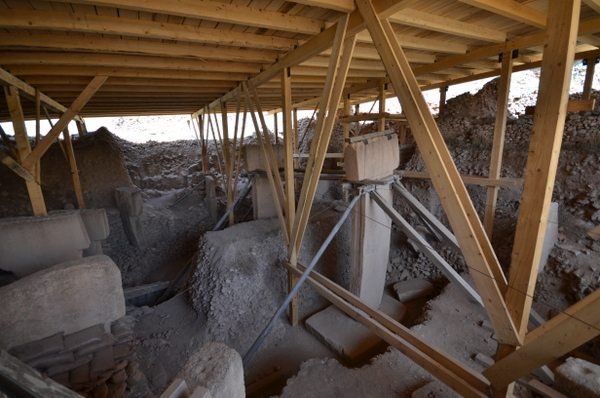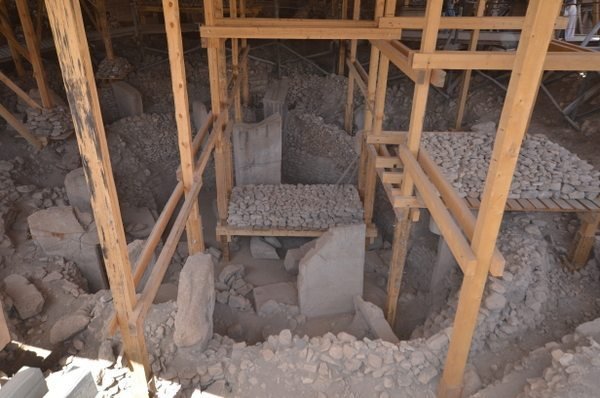The World’s Oldest Temple: Göbekli Tepe in Turkey
If you thought Stonehenge was old and fascinating, prepare yourself to be wowed by a place only a few archaeological hipsters have been swooning over. Unlikely to be a household name, Göbekli Tepe – you might translate it as Beer Belly Hill – should be top of your list if you want to ponder ancient human civilization. In 2018, UNESCO added it to its World Heritage list. And it almost went undiscovered. As it happens, some archaeologists from the US and Turkey may have left some stones unturned back in the 1960s. German Archaeologist Klaus Schmidt took the stone the archaeologists had rejected and found a site that has thrown the archaeological world for a bit of a loop. While working at some Neolithic sites in this southeastern area of Turkey during the 1990s, Schmidt came across reports from three decades before about a nearby hill with some rubble at the summit which had been assumed to be perhaps a Byzantine outpost or a cemetery not more than 1,000 years old. But Schmidt knew the minute he saw its shape that something more lay beneath the surface.
The rounded tell rose above all the other hills, and when he started digging he found stone circles and massive t-shaped stones that clearly were of the style of other sites nearby. He has determined there are at least 16 of these circles. With no evidence of a settlement here and the symbolic carvings and positioning, this is believed to be the oldest known “temple” site on earth, dating back to about 9,000 BCE, predating pottery, and predating even Stonehenge. But more incredibly, predating the rise of agriculture, which is often associated with the rise of temples and religion itself. It may mark homo sapiens’ transition from hunting and gathering to agriculture.
The going hypothesis is that Neolithic people, still hunters and gatherers, but at the time starting to settle in to stationary hunting communities (something that would be necessary when they developed agriculture), would come to this site for ritualistic purposes and return to their settlements. At the time the area was forest, and savanna, almond, pistachio, and oak trees were abundant. Images of game animals and more adorn many of the stones which had been excavated nearby and arranged at the top of this artificial hill. Today, the land is clear for miles in all directions, severely damaged by humans and their grazing herds.
“Tito forbade goats,” Schmidt says, referring to the former dictator of Yugoslavia who outlawed the animals in regions he wanted protected. “Sheep will eat the grass, but goats eat roots.” For centuries shepherds worked these hills. Comparing the abundance of wildlife in the rock carvings – ducks, foxes, cranes, eagles, snakes, fish, rabbits, scorpions — and the desolate landscape stretching to the horizon is a sobering moment.
And in the midst of this land on a high hill made a bit higher with human gathered rubble, Neolithic people built circles of stone with central and circling pillars of limestone that weigh as much as 16 tons and stand as high as 18 feet. The how isn’t nearly as perplexing as the why. The stones were cut from the surrounding hillsides and moved, perhaps simply dragged, to their positions. The didn’t stand freely and archaeologists aren’t sure what kept them up originally other than perhaps surrounding stones. Interestingly enough, many of the animal figures on the site’s pillars were actually covered by purposely laid rubble even at the time of the site’s use. This suggests the figures held a power, not a decorative purpose that visitors needed to see. Think of burials with symbolic items inside the tomb, or cultural tattoos that are hidden by hair or beneath the clothing – not to be observed but to summon some sort of power.
Without a lot of carbon-dating material, the meaning of much of this, and what went on here, is difficult to determine. In fact, we may never find answers, but there is a complexity here that compels visitors to try to imagine what was going through the minds of our distant ancestors. But one thing to note is that the circles grew less complex and skilled over time as new ones replaced the old, until finally the whole site was abandoned and with care, buried. This may have been the point when our Neolithic ancestors finally settled into sustaining themselves not with game animals, but with maintained crops — a whole different system and mindset as land became important as likely did the beliefs about the magic of how it all worked.
Schmidt and his teams have exposed four of the sixteen circles and a visitor center and shelter are being created to handle the increasing number of visitors. Due to its UNESCO World Heritage status, Göbekli Tepe received some necessary protection from tourist traffic including the roof and boardwalk. Bus tours bring groups to marvel at the stone circles. Professor Schmidt had begun preliminary excavations of two more circles nearby. Not to completely expose them, but to confirm his suspicions that the rest of the circles that remain buried are essentially the same as the four on display.
“To excavate is to destroy,” says Schmidt. Parts of the site remain as he found them so that future archaeologists, perhaps with better technology, can be the first to uncover them and perhaps find something that current science cannot explain or analyze. So for now we are left with our imaginations and several millennia between us and the creators of this archaeological wonder.
That day I spoke to Dr. Schmidt was his last day at the site for the season as summer heat would make work unbearable. We found out a couple weeks later that he had flown back to Germany the following week and died of a heart attack.
Check out this Göbekli Tepe photo gallery but also be sure to read about Kevin’s personal visit to the site.
Enjoy Kevin’s blog posts from Southeastern Turkey! Click here for his Gaziantep trip including these two posts about Gobekli Tepe.









 ORDER YOUR COPY TODAY!
ORDER YOUR COPY TODAY! ORDER YOUR COPY TODAY!
ORDER YOUR COPY TODAY!
Pingback: Photo Gallery: Gobekli Tepe, Turkey
Pingback: Neolithic Göbekli Tepe and Temple Tantrums